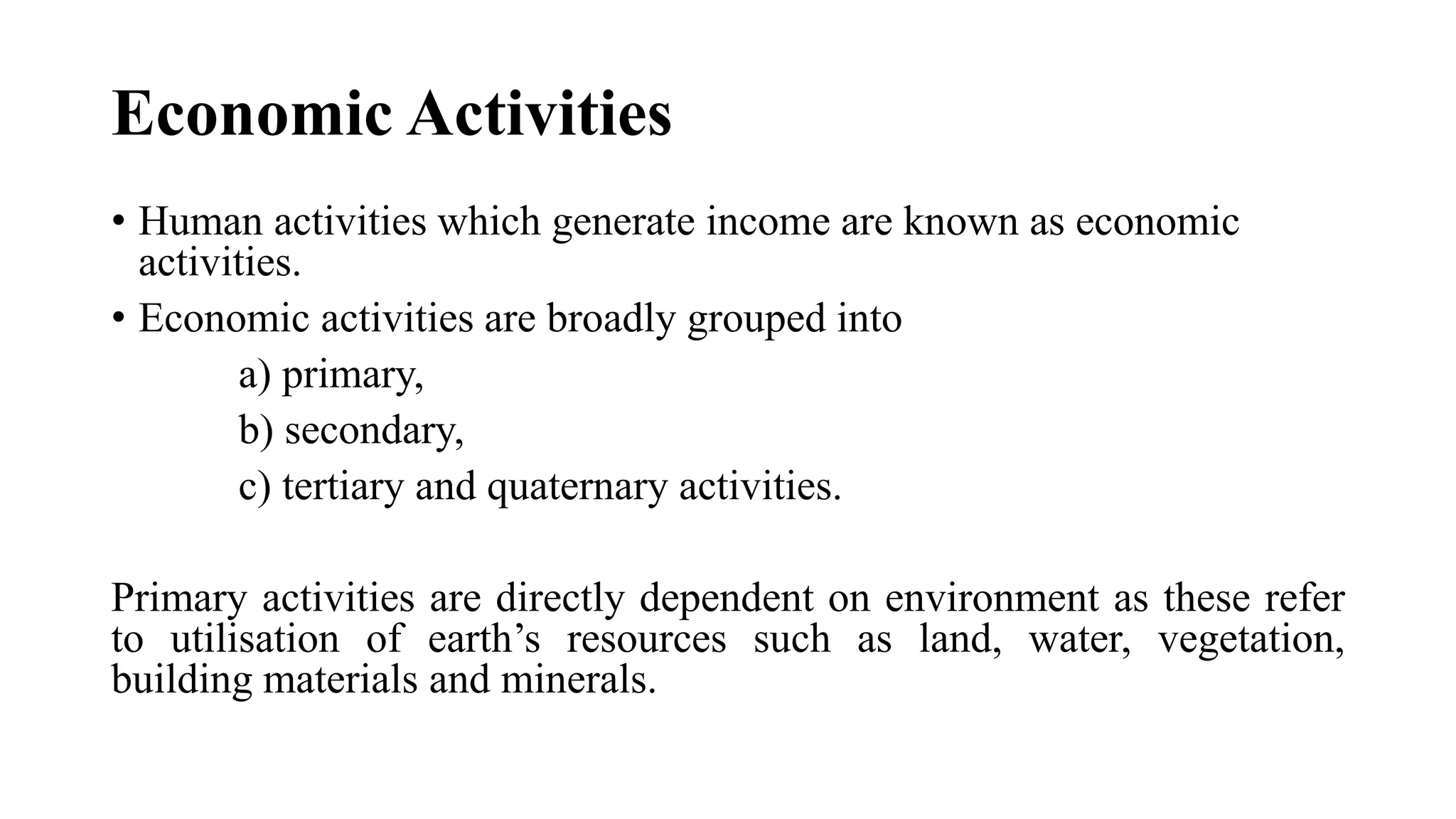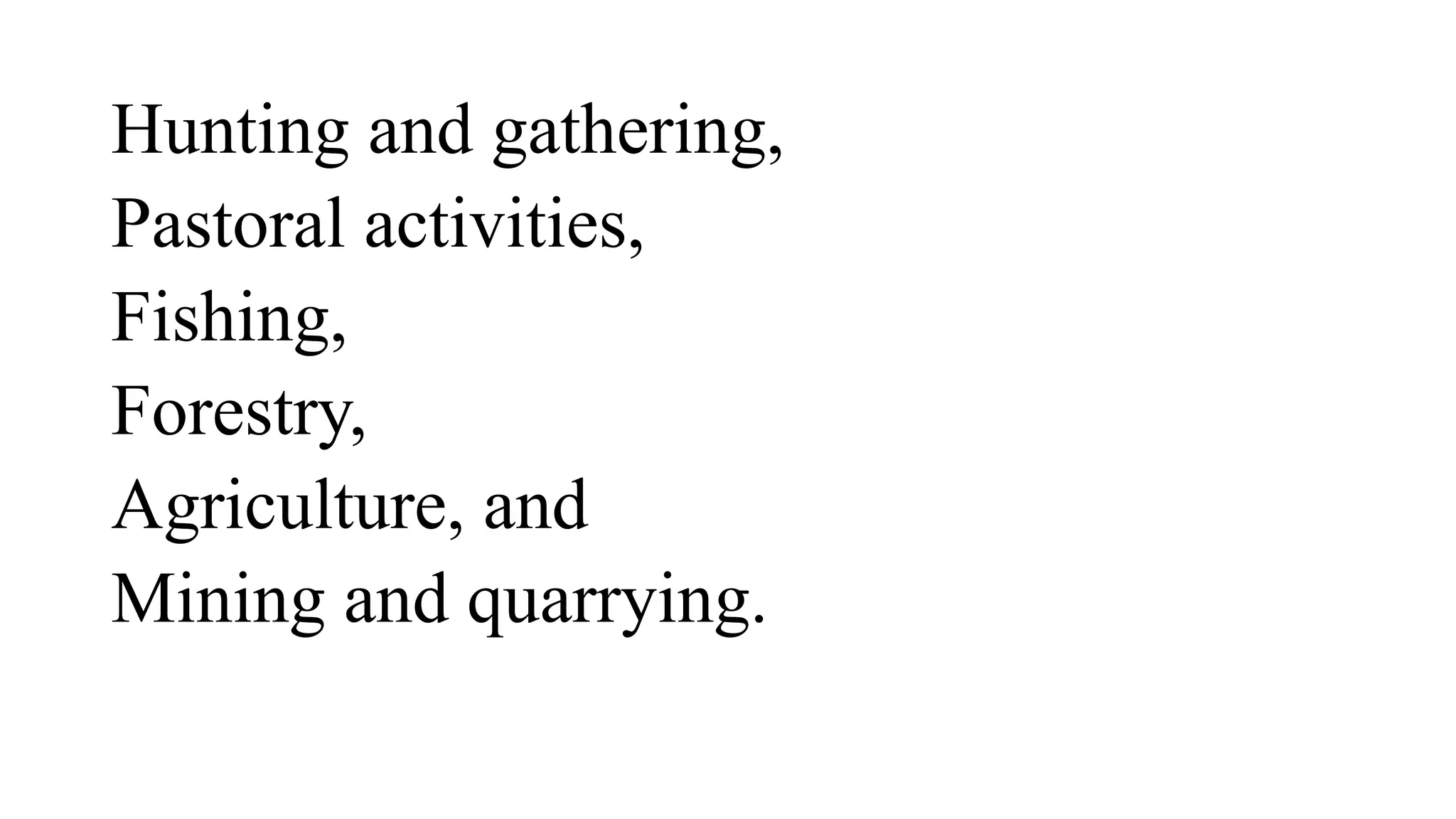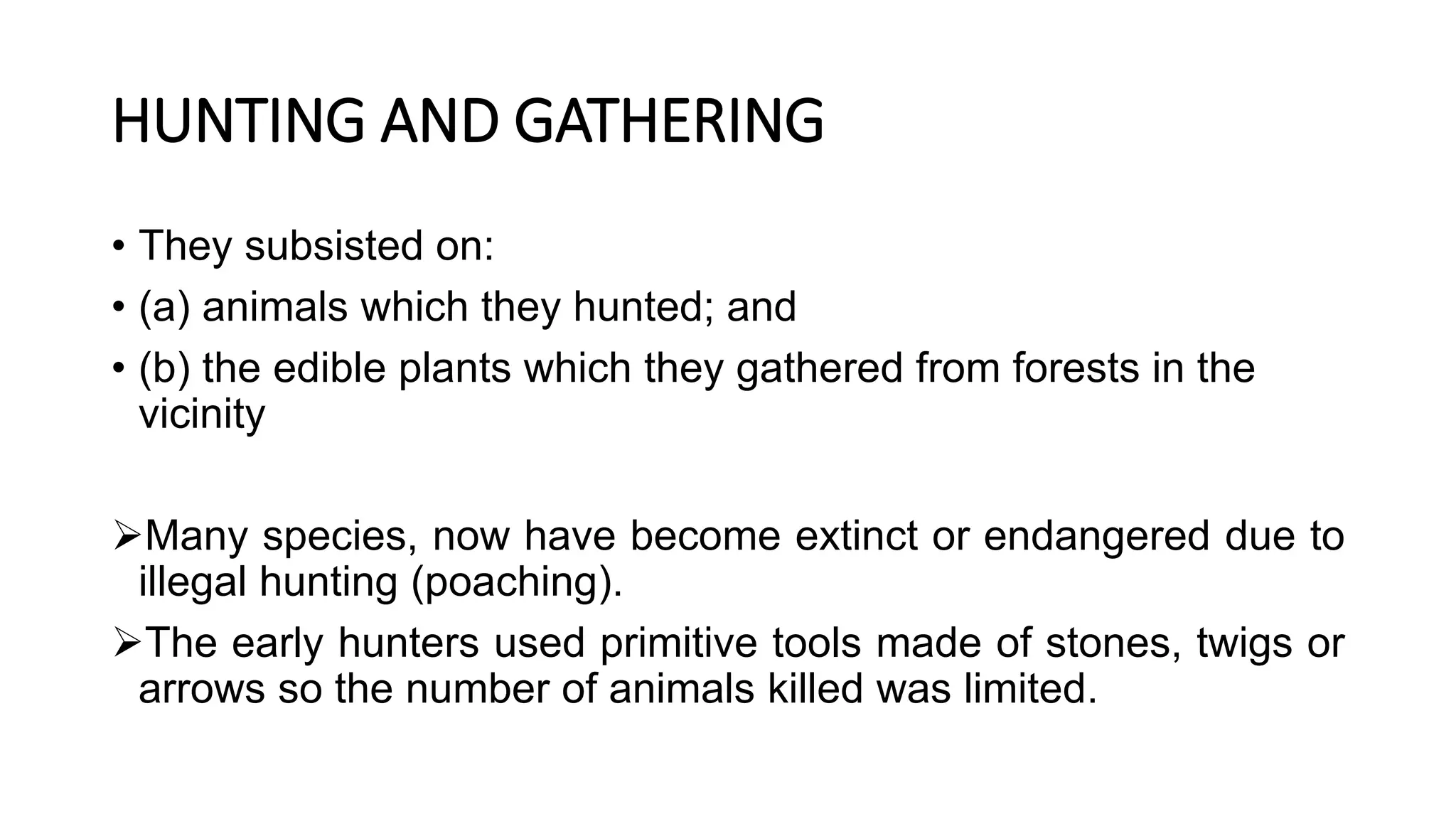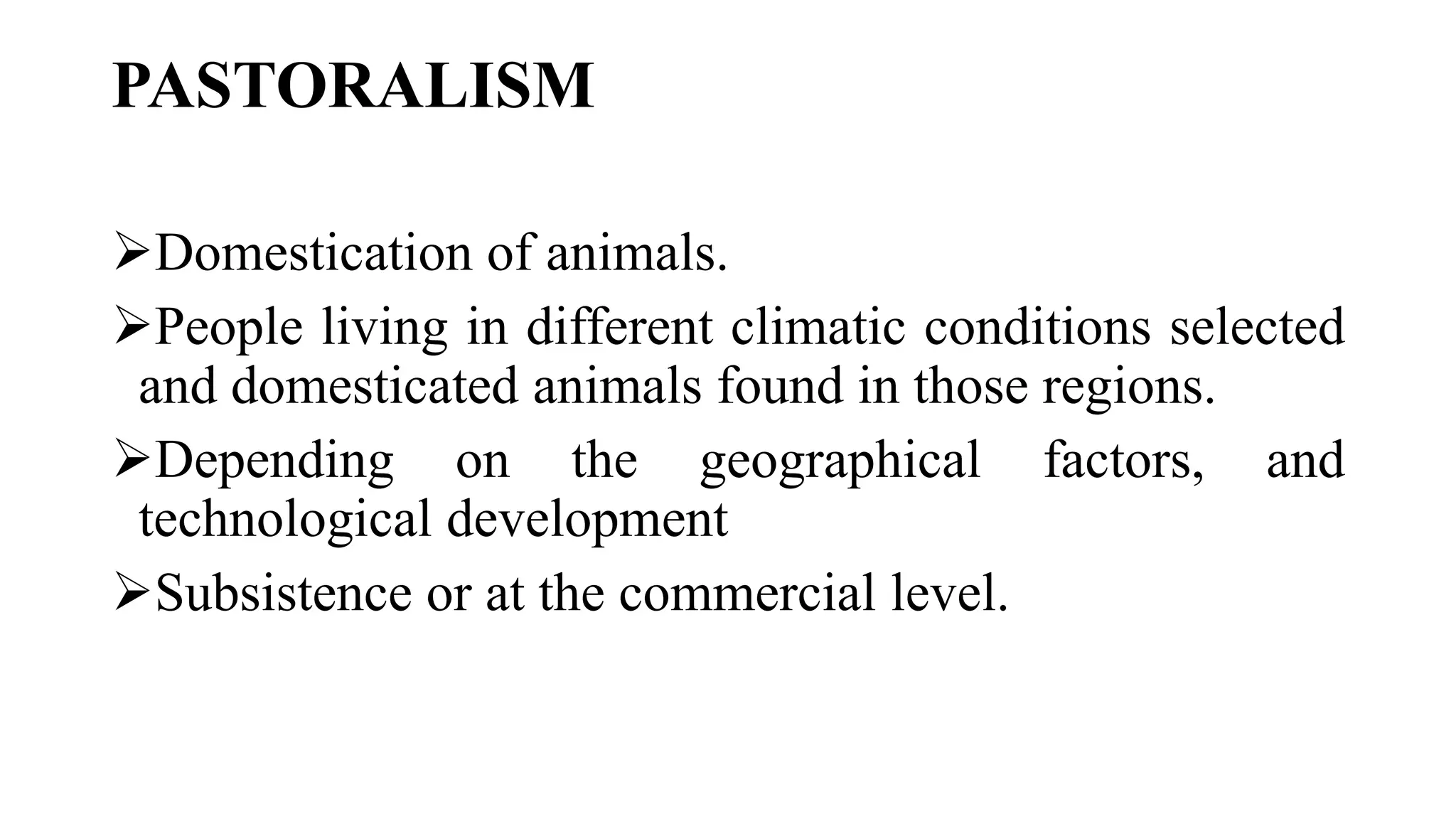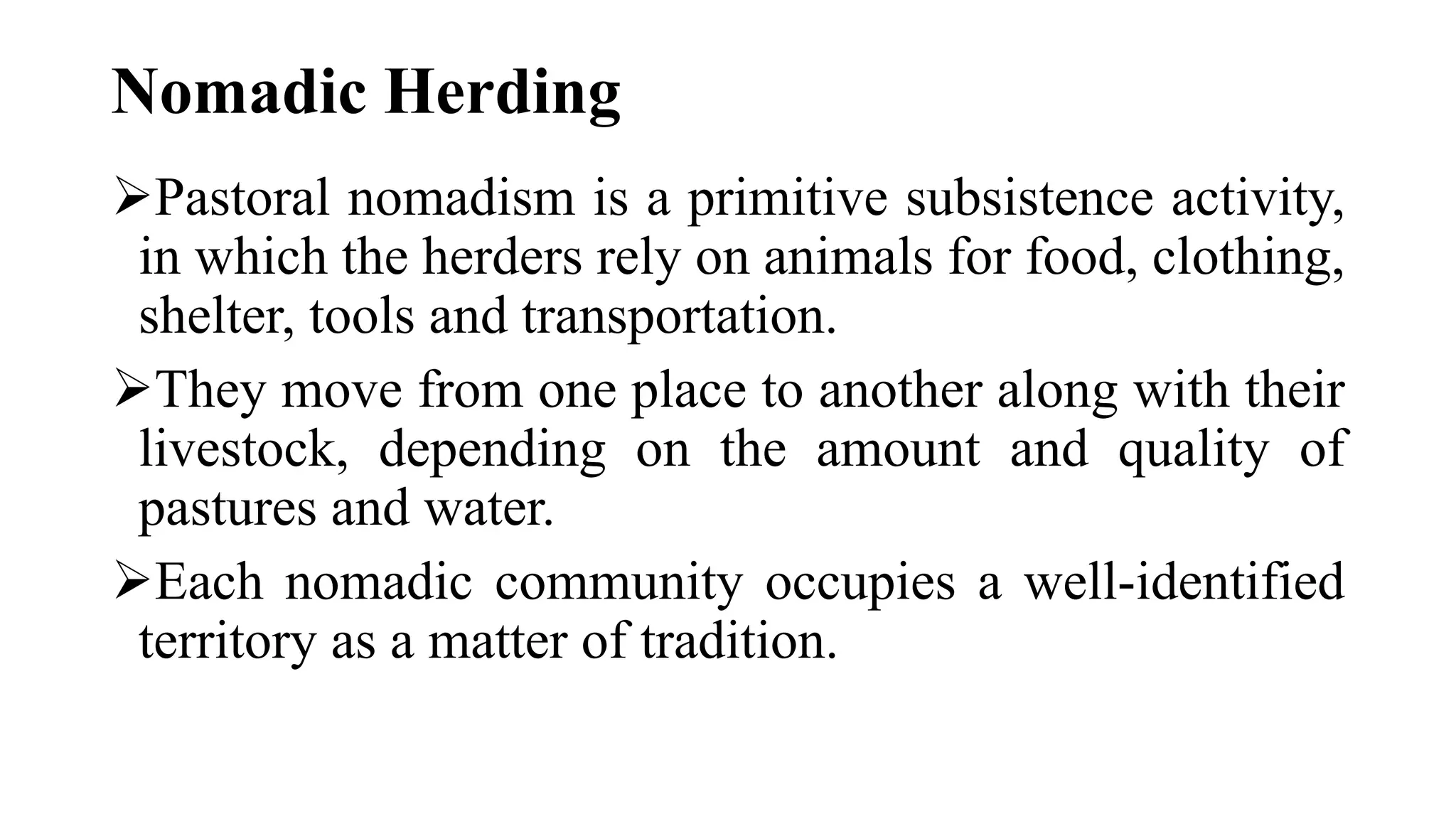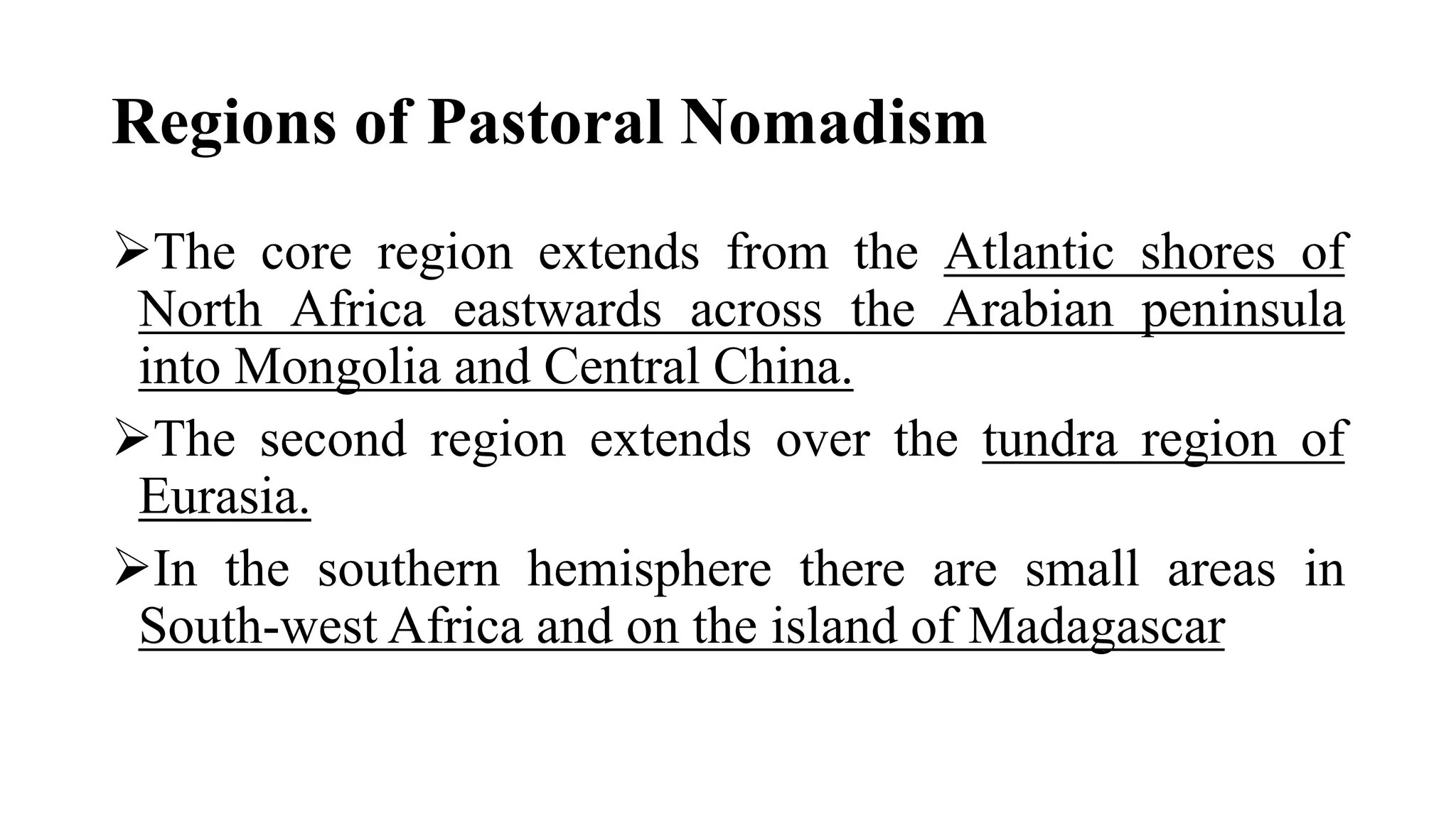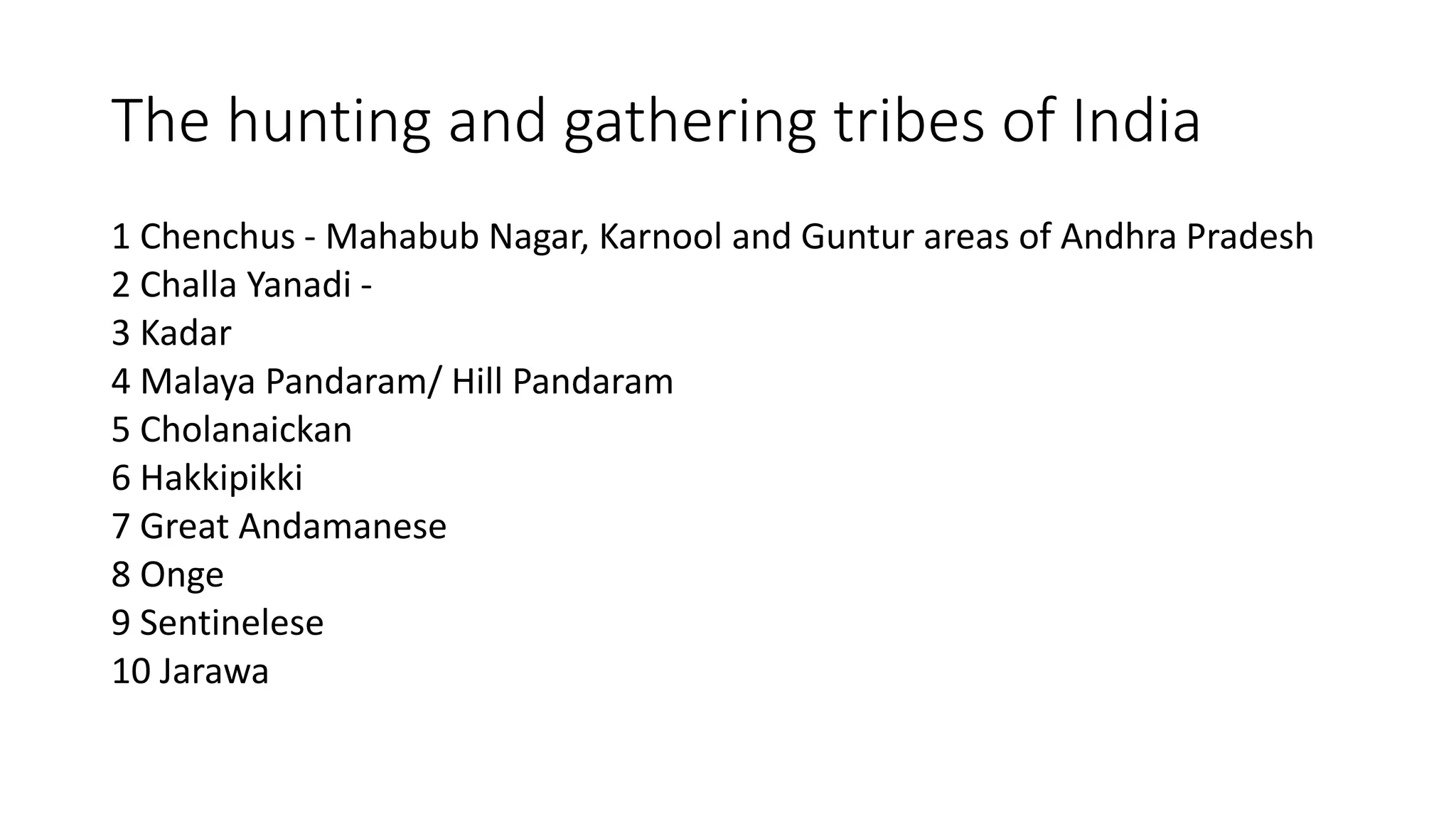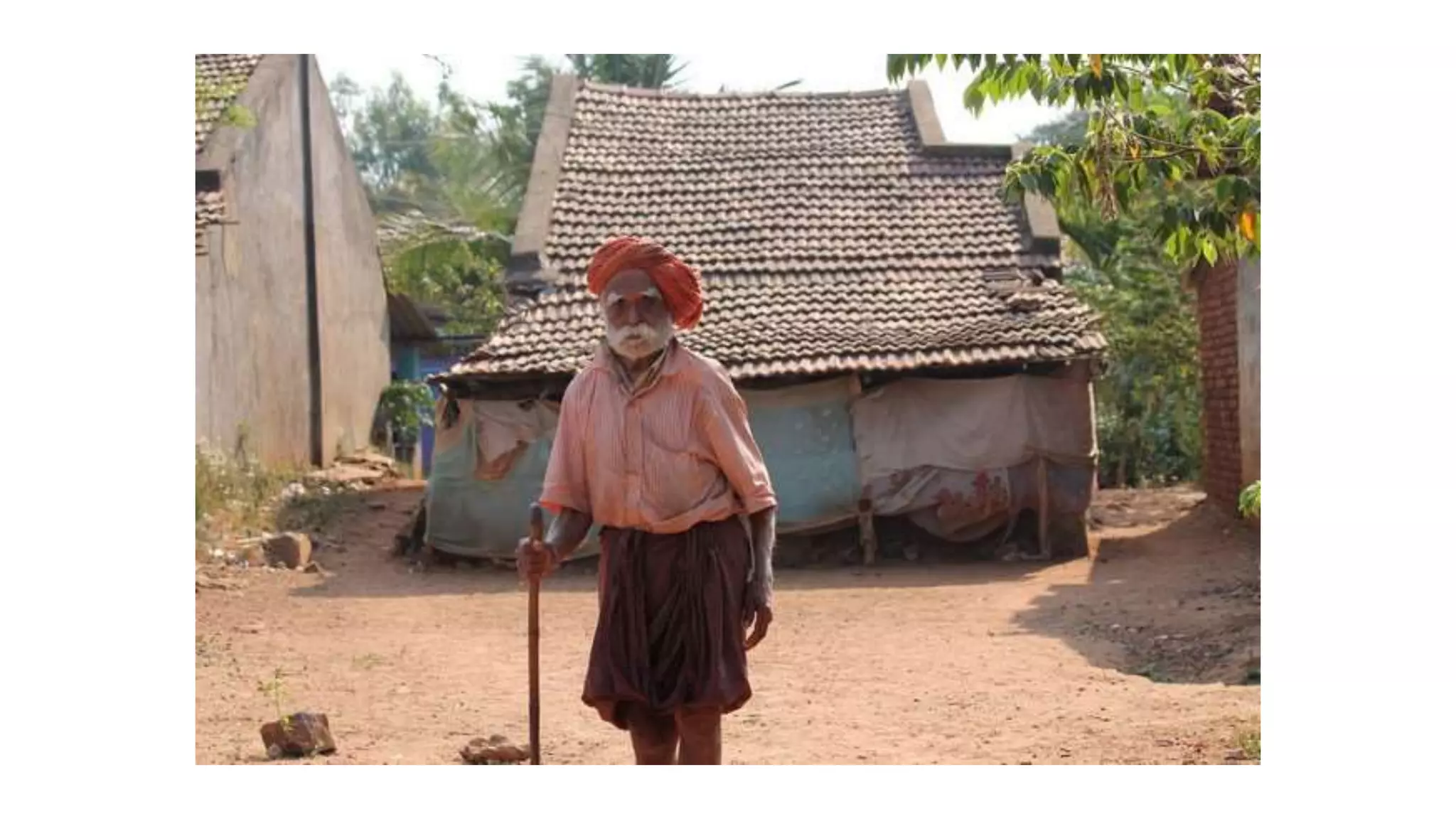The document discusses various hunting and gathering tribes found in India. It describes the Chenchus tribe located in parts of Andhra Pradesh, who numbered around 49,000 people according to the 2001 Census. It also outlines other tribes such as the Challa Yanadi and Kadar found in Andhra Pradesh and Kerala respectively, and details their traditional occupations of foraging, fishing, and hunting small animals using tools like sticks and traps. The document provides information on the geographical locations and populations of multiple indigenous tribes in India that traditionally relied on hunting and gathering for subsistence.

